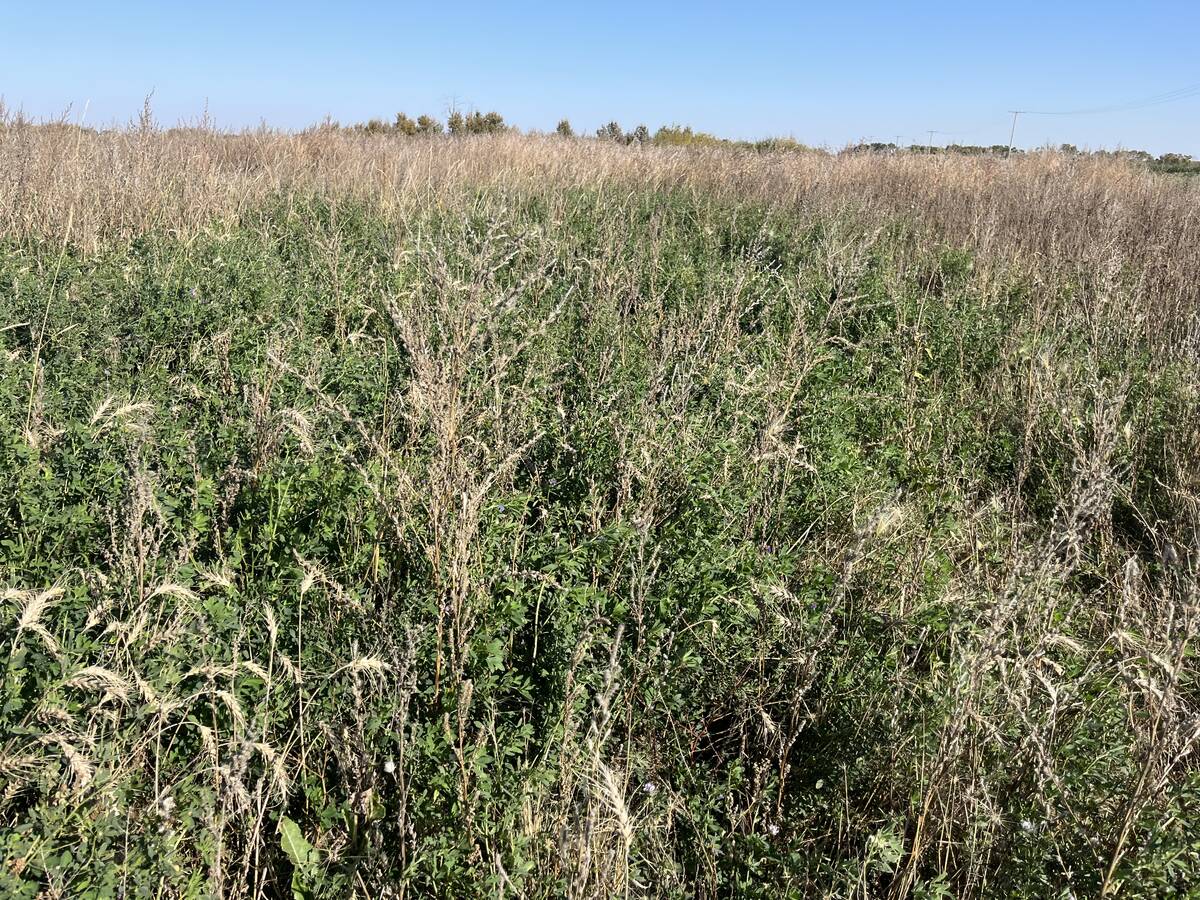Livestock exporters are giving mixed reviews of the American proposals to resume live animal trade with Canada.
The new guidelines could allow the partial resumption of trade in youthful animals next year, but the Canadian elk, sheep and goat producer organizations argue some of the rules are unreasonable.
Glenda Elkow of the Alberta Elk Association said these animals are not fed animal-based proteins so they should never have been included in the ban.
“The feeding of ruminant meat and bone meal to farmed cervids is not done from the industry association’s standpoint,” she said.
Read Also

Dormant seeding forages frees up farmer time and gets ahead of weeds
Dormant seeding isn’t common practice and can appear daunting, but there are some techniques to give Manitoba farmers an edge
The United States Department of Agriculture rules were posted on the federal registry Nov. 4 and are available for public comment until Jan. 4. International trade for live Canadian animals halted May 20 after a single case of bovine spongiform encephalopathy was reported. The ban applied to all ruminants, including deer, bison, goats, sheep, llamas and alpacas.
Age restriction is the main objection among elk and goat producers. Exports could resume for cattle and bison under the age of 30 months, while sheep and goats under 12 months are eligible for export.
However, cervid meat and live animals must come from elk and deer born after the ruminant-to-ruminant feed ban was implemented in August 1997.
Elk are typically born in late spring, which means animals born in 1997 can’t be exported. This could stop older animals from being sold to hunt farms in the U.S. Many are larger trophy animals more than eight years old, said Elkow.
In addition, the U.S. rules state no animals from a farm having a case of any transmissible encephalopathy may be exported.
While the cervid industry has faced problems with chronic wasting disease, BSE has never been detected in deer and elk.
Alberta, Saskatchewan and Manitoba regulations demand meat from elk and deer be tested for CWD before it can be released for consumption.
The Canadian Cervid Council, the national organization representing the elk and deer farming industry, has a number of concerns. Its comments to the USDA said there is no scientific risk in the products and ask why there is no recognition of programs put in place to control TSEs in Canada.
“Live elk or deer participating in surveillance programs in our country are probably some of the safest to be found internationally,” said the council.
It is also concerned that inedible byproducts, such as trophy antlers, must come from animals born after the feed ban although there is no scientific evidence of risk.
It also wants Ottawa to implement a CWD recovery package for the elk and deer industry. The previous BSE recovery package did not fully address the losses specific to the elk and deer industry.
The sheep and goat industries are compiling a joint comment questioning the USDA’s 12 month age limit on its exports. It also said there is no scientific link between scrapie and BSE, therefore sheep and goats should not be included in the ban.
A copy of these concerns must also go the Canadian Food Inspection Agency so requests may be forwarded to the world animal health organization, the OIE, said Ann Marie Hauck, chair of the Canadian Goat Federation.
“The USDA draft proposal is in line with the existing OIE recommendations, the same recommendations Canada currently imposes. If we are hopeful of seeing a change in the U.S. proposed draft regulations, we need to see a change in Canadian regulations,” said Hauck.
Alberta bison producer Gil Hegel welcomed the news of U.S. rules after suffering a summer of poor market prices and no room at abattoirs.
Bison are under the same rules as cattle so all shipments of live animals and meat halted on May 20. The industry had suffered low prices before, but closed borders worsened the situation when prices dropped by 50 percent.
“We were starting to climb in the spring. Our prices for carcasses were starting to move up and then, bang, May 20 hit.”
Hegel calculates more than 7,000 Alberta bison were shipped annually to a processor in North Dakota. That market was lost.
While the bison industry did not suffer as much from a backlog of cull cows and bulls, it did have difficulty finding a certified plant to process and ship meat when certain cuts were allowed back into the U.S. as of Sept. 10.
Hegel also questioned why bison were included in the ban because no animals have ever been found with BSE.
Bison do not typically receive high protein diets, relying more on forages and some grain because they do not metabolize high protein diets well.















